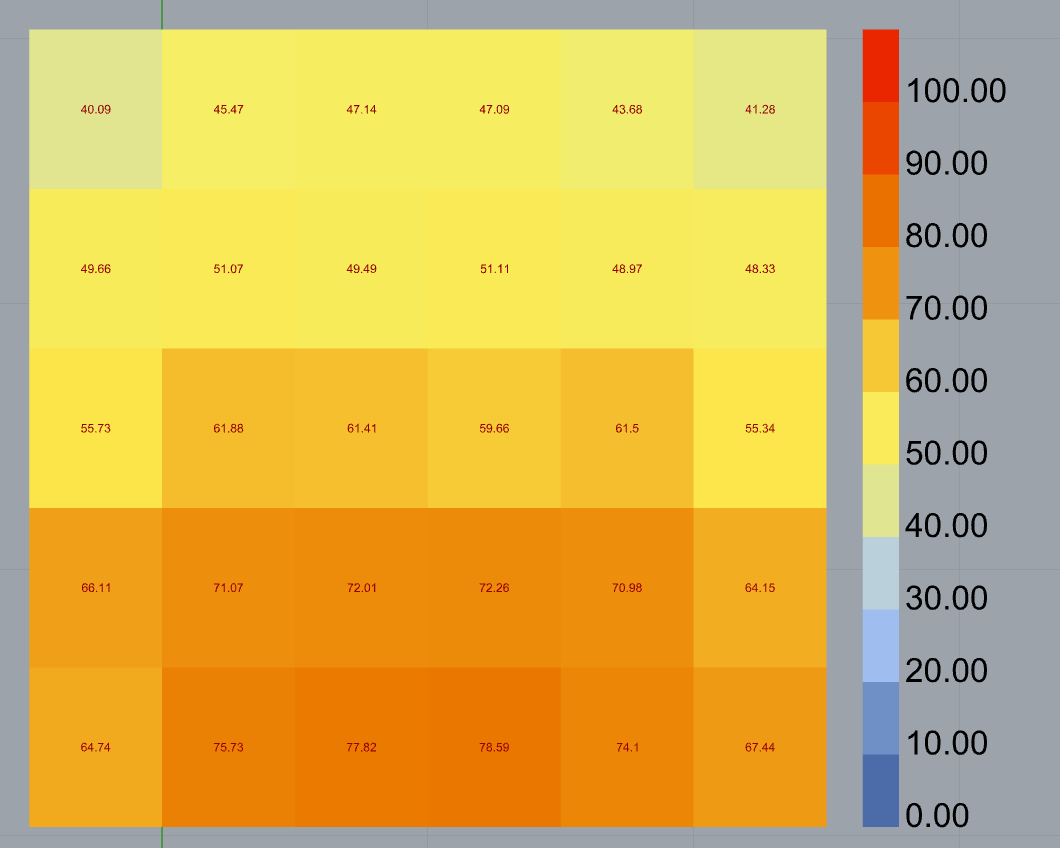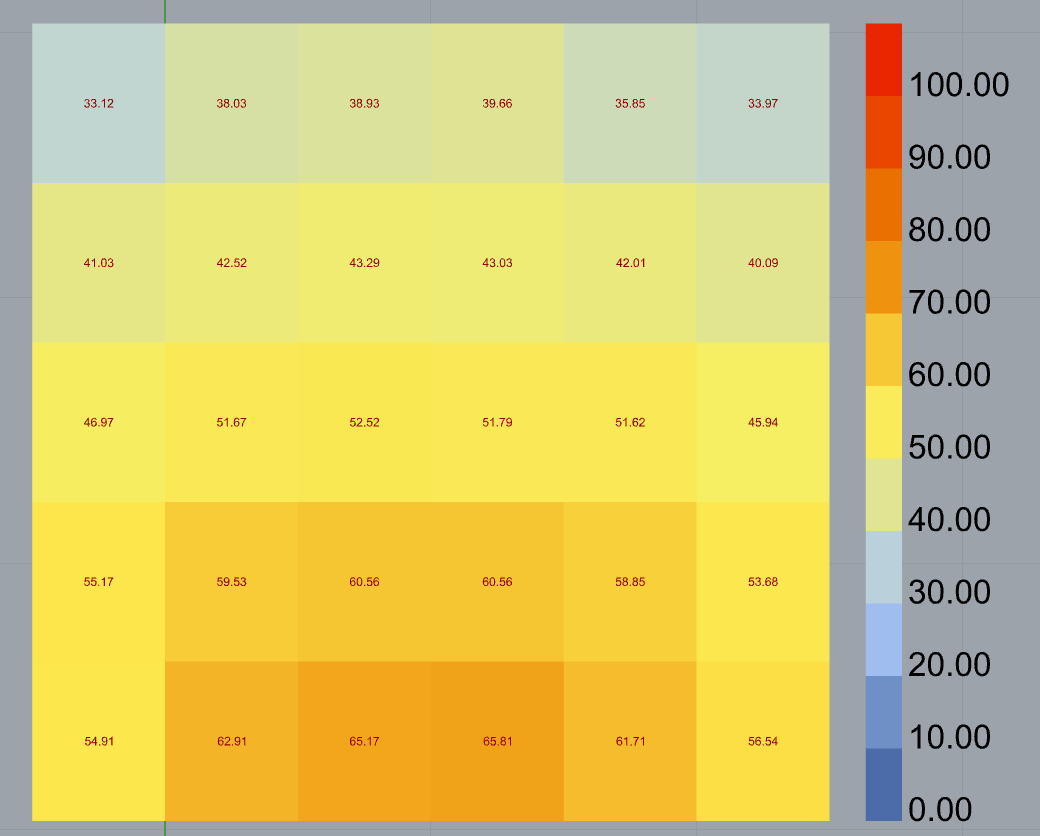Hi @LaFleur,
No. It will do a simulation of each state individually.
As mentioned above the ray tracing of the states are performed individually. This means that when creating a dynamic schedule in post-processing we pick and choose which results (states) we want for each hour. That’s why I previously mentioned the following:
In this case you are not doing just 1 simulation. You are doing 511 simulations.
Remember that the states schedule uses the integer value. The first state is 0, the second is 1, the third is 2, etc. The order is the order at which the states are added to the ApertureGroup. Your states schedule should be a list of integer values.
I tried to let the simulation run on low Radiance parameters (roughly 30 minutes). Below you can see the difference in DA with and without states.
Here is the attached file. I changed the schedule so it matches what you want to achieve (I believe).
Shade Window Group 08122022_Mikkel_re_.gh (149.5 KB)

